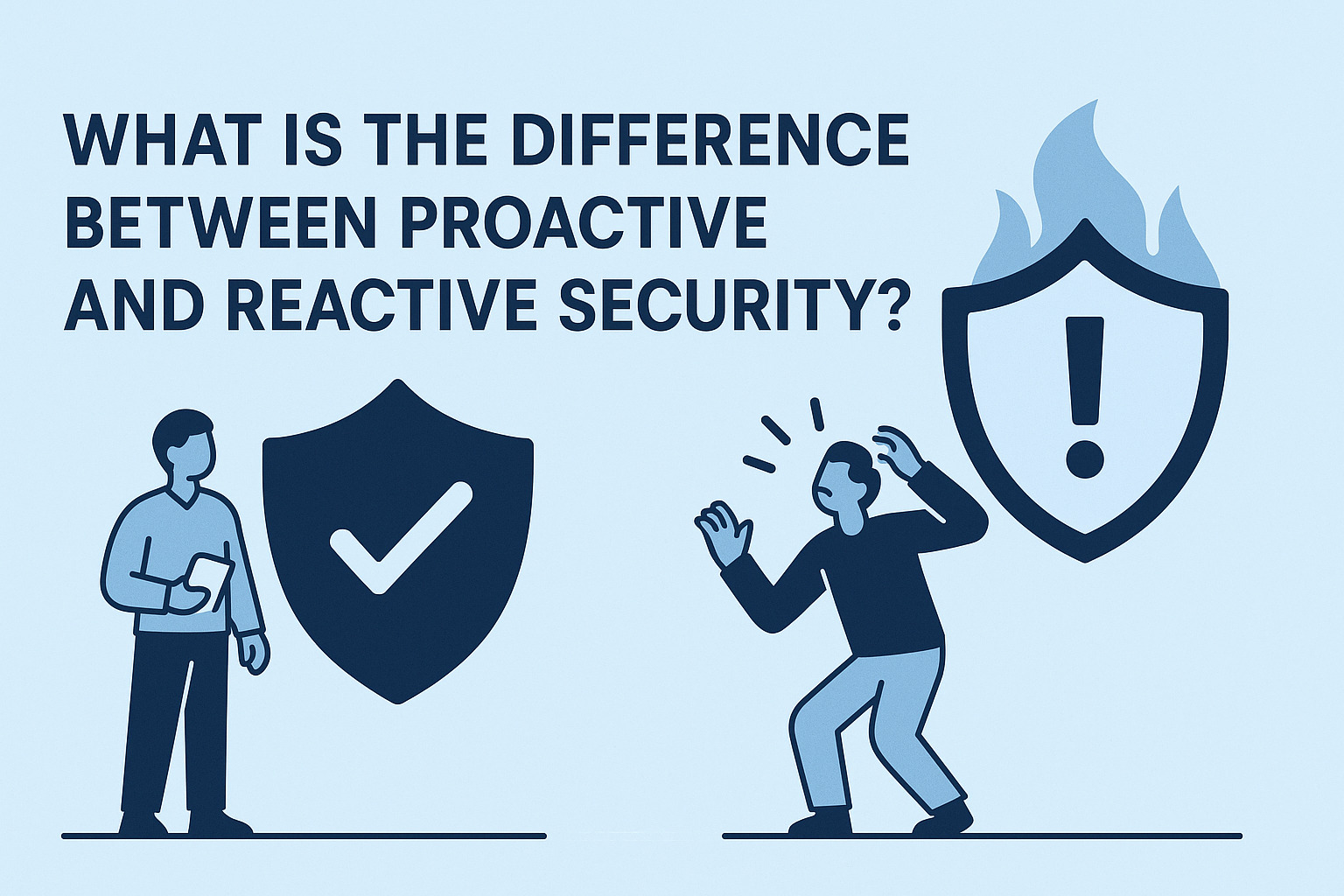Cybersecurity costs are projected to reach $13.82 trillion annually by 2028, according to San Diego University research. This growing threat landscape underscores the need for a 24/7 Security Operations Center (SOC) that protects your data and systems in real-time.
Traditional reactive security responds only after an attack. In contrast, proactive security—especially through outsourced SOC services—identifies and stops threats before they cause harm. This shift delivers real-time detection, faster responses, and stronger prevention.
What Is Reactive Security and Why Is It No Longer Effective?
Reactive security responds only when an attack occurs. This delayed response allows cybercriminals to exploit vulnerabilities before defenses are activated. As threat actors evolve, reactive measures struggle to keep up.
Key Characteristics of Reactive Security:
- Waits for incidents to happen
- Depends on traditional tools like firewalls and antivirus
- Offers slower response times
- Incurs higher costs due to breach recovery
What Makes Proactive Security the Modern Standard?
Proactive security focuses on identifying and neutralizing threats before they occur. Powered by AI and real-time analytics, this approach continuously monitors systems to prevent incidents entirely.
Benefits of Proactive Security:
- Real-time detection and prevention
- Automated response workflows
- Cost efficiency through threat mitigation
- Stronger defense against evolving cyberattacks
How Do Proactive and Reactive Security Compare?
| Feature | Reactive Security | Proactive Security |
| Approach | Responds after attacks | Prevents threats before they occur |
| Response Time | Post-incident | Real-time and preemptive |
| Cost | High due to recovery | Lower through prevention |
| Technology | Firewalls, antivirus | AI, machine learning, threat intelligence |
| Effectiveness | Limited against modern threats | Adaptive and robust |
What Is an Outsourced SOC and How Does It Work?
An outsourced Security Operations Center (SOC) is a third-party team of cybersecurity professionals who provide Managed Detection and Response (MDR) or Managed Security Services (MSSP). These teams deliver infrastructure, 24/7 monitoring, and advanced analytics to protect organizations.
What Are the Key Benefits of Outsourced SOC Services?
1. What Threat Analysis Capabilities Do SOCs Offer?
Outsourced SOCs utilize AI and machine learning to detect both existing and emerging threats. This ensures continuous protection across all systems.
2. How Does 24/7 Monitoring Enhance Security?
Continuous monitoring enables real-time detection of abnormal activity, reducing incident response time and minimizing damage.
3. Why Is Automation Critical in Incident Response?
Automated processes accelerate responses, reduce human error, and streamline threat containment.
4. Is Outsourced SOC More Cost-Effective Than In-House Solutions?
Yes. Businesses avoid capital expenditures on infrastructure, hiring, and training. Outsourcing provides enterprise-level protection at a fraction of the cost.
5. How Do SOCs Improve Access to Security Expertise?
Outsourced SOCs grant access to specialized cybersecurity analysts who use best-in-class tools and analytics. These experts offer insights, risk analysis, and actionable intelligence.
Why Are MSPs Moving Toward Outsourced SOC Models?
MSPs are choosing SOC-as-a-service to avoid the costs and complexities of building in-house cybersecurity operations. The growing frequency of major breaches, such as the 2024 UnitedHealth Group breach affecting 190 million individuals, makes this shift essential.
Even the U.S. Department of Justice recently charged 12 Chinese nationals for attacks on over 100 organizations—including the Treasury—highlighting the urgency of modern cyber defense.
What Features Should You Look for in a Managed SOC Provider?
When selecting an SOC partner, businesses should evaluate:
Does the SOC Comply with Industry Regulations?
Choose providers certified under SOC 2, HIPAA, GDPR, and other relevant frameworks to ensure legal compliance.
How Strong Is the Provider’s Threat Intelligence?
An ideal SOC uses real-time global data, AI-driven analytics, and advanced threat modeling.
Can the SOC Integrate with Existing Tools?
Ensure the SOC solution works seamlessly with your current cybersecurity stack to maximize ROI.
Why Is Outsourcing Your SOC a Strategic Business Move?
Outsourcing a SOC is not optional—it’s strategic. Here’s why:
- Cost Optimization: Avoid high infrastructure and staffing costs.
- Expert Access: Work with experienced, certified analysts.
- Scalability: Adjust services as your business grows.
- Continuous Protection: Real-time threat detection and response minimizes damage.
How Can IT By Design Help Secure Your MSP?
IT By Design offers SOC 2-certified outsourced SOC services that integrate with your existing systems. Our security experts provide 24/7 monitoring, incident response, and compliance-ready protection to keep your MSP resilient.
You also gain access to customized NOC services, offering end-to-end infrastructure monitoring and management.
What’s the Next Step Toward Proactive Security?
Choose a trusted SOC partner who understands the MSP landscape. With IT By Design, you receive proactive, expert-driven security that evolves with today’s threats.
Ready to elevate your cybersecurity posture? Contact us today and secure your future.



